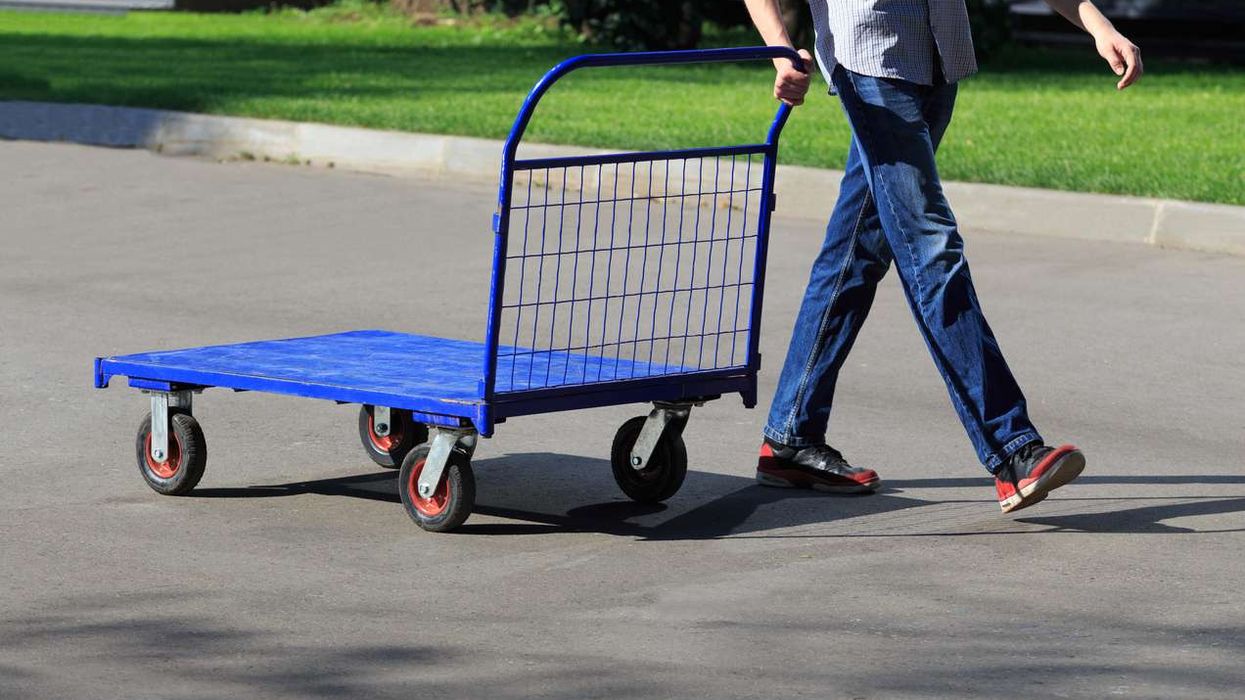Efficient material handling is at the crux of productivity for businesses in most industries, be it when running a warehouse or perhaps a busy manufacturing facility. Even with a small local store, you need the right handling equipment to improve workflow and protect your team against preventable injuries. This is where platform trolleys often crop up as a suggestion. They provide a simple yet effective solution for transporting stock and supplies efficiently. But, more important than that, they’re extremely safe and require little to no training.
Selecting the correct trolley though, that’s something you need to get right from the outset. Your environment can have a big impact on both its efficiency and compliance with all the usual workplace health and safety regulations. So, it’s not just about moving loads, it’s about doing so in a way that improves speed and bettering workforce's well-being. So, understand your space before you know what model(s) are worth going with.
Why your business needs the right platform trolley
For businesses that are constantly moving goods or heavy materials, having the right platform trolley is of course a necessity. It’s not so much about convenience, though choosing the right model definitely helps staff manoeuvre these loads more efficiently and improve floor-space organisation. If you get it right, you can reduce the risk of strain or fatigue, and this reduces sick days and fatigue-led drops in productivity - not to mention that staff will generally be more motivated and feel valued. Some benefits include:
- Reduced downtime
- Fewer damaged goods
- Lower employee fatigue
Most important perhaps, using the right trolley is going to lead your strategy to reduce manual handling injuries. In the UK, 17% of all non-fatal workplace injuries are from manual handling. This is a lot, and it could be way higher depending on your industry.
Understanding the different types of platform trolleys
The trolley problem (if you excuse the pun) is that they come in a variety of styles. Each is designed to handle different operational challenges. Below, we have put together the most common types you’ll encounter, along with their key applications.
Standard flatbed trolleys
These are the workhorses you see dotted around most warehouses and workshops. They have a flat, open deck with fixed (or often folding) handles. They’re perfect for transporting large boxes and equipment, or even bulk items. Their simplicity makes them reliable, particularly in humble warehouses, and they’re easy to maintain and highly versatile across many departments.
Folding-handle trolleys
When space is limited, as is often the case in small retail stockrooms or service corridors, a folding-handle design is better because it stores while taking up less space. But, importantly, strength is not really compromised. They’re lightweight (to make them easy to fold and store, else it is pointless), and portable. They can be quickly deployed when needed, making them popular in multi-purpose facilities.
Cage trolleys
Cage or mesh-sided trolleys will provide more security and stability for smaller or high-value goods. The enclosed design will prevent items from slipping or falling during transport, which is especially useful in logistics and hospitality. It’s also common in retail, where you can take them straight off the truck, often onto the footpath where the public walks, and into the shop. The cage here protects the public, which can cut down on accidents and legal fees.
Heavy-duty industrial trolleys
These are built for strength and endurance. Heavy-duty models have reinforced frames and high-capacity castors that are easily capable of handling more substantial loads. Because of this, they’re usually only worthwhile in industrial environments where robustness is needed. One example might be in automotive production lines or warehouses handling metal components.
Electric or powered trolleys
For high-volume operations or facilities with long travel distances, electric-assist trolleys are here to cut down on operator strain. These are made to handle heavy payloads effortlessly, like the industrial trolleys, but are better for employee wellbeing. This improves both productivity and safety, because they help maneuver itself. The upfront cost is of course higher, but they can quickly repay the investment when factoring in reduced injury risk, and in particular, faster throughput.
Choosing between these types, unsurprisingly, all comes down to your operational priorities. Do you want to prioritize maneuverability? Capacity? Storage efficiency? Ergonomic performance? Or perhaps price and versatility?
Key factors to consider before buying
We touched on some factors that may go into selecting the ideal trolley above, but it’s important to really dig into this - not just because of the upfront costs, but the long-term implications on your day to day operations. The following checklist can help:
- Load capacity: Always select a trolley that slightly exceeds your heaviest regular load to prevent overstrain and prolong frame life. This can improve longevity
- Construction material: Steel has the durability for industrial use, aluminium has lighter handling, while high-density plastic is corrosion-resistant for clean environments
- Platform surface: Anti-slip finishes and edge lips help stabilize loads and cut down on accidents
- Wheels and castors: Choose a wheel size and material based on the surface type - larger rubber wheels for uneven ground, smaller phenolic wheels for smooth floors
- Manoeuvrability: Swivel castors, steering handles and balanced load distribution all help smoother movements, particularly in tight aisles
- Braking systems: Locking brakes prevent movement when loading or unloading, keeping not just workers safe but customers
- Storage and portability: Folding designs or detachable handles are perfect for space-constrained sites.
- Environmental suitability: Materials and wheels ought to be able to withstand moisture and chemicals - and possibly extreme temperatures if applicable.
- Maintenance access: Grease points, replaceable wheels and modular parts make upkeep easier.
- Total cost of ownership: Evaluate lifetime cost, not just purchase price. This means taking into account maintenance, durability, employee safety benefits, and any other benefits/opportunity costs.
It’s worth drilling home that each factor directly affects operational efficiency and staff welfare. So for example, a trolley with an undersized load rating might buckle under stress, while one with poor braking could cause collisions or back injuries. The money saved on getting ones without breaks may be a terrible mistake after a few weeks of usage alone.
How the right trolley supports health and safety compliance
Selecting the right platform trolleys isn’t just going to improve your efficiency, but it actively helps with compliance in workplace safety legislation. Under the Manual Handling Operations Regulations 1992 and the guidance of the Health and Safety Executive (HSE), employers are obligated to avoid or reduce manual handling risks “so far as reasonably practicable.”
A properly specified trolley, off the bat, is going to help staff move loads safely and with less of the physical strain associated with lifting and pulling. Just think about how much easier the electric on is to push up ramps, for example - staff will have more energy for other tasks!
The financial implications are equally stark, because the HSE estimates that manual handling injuries cost UK employers billions annually through lost productivity and staff absences. Compensation claims are also included in that, and in the US, it’s considerably more.
Matching trolley features to your specific industry
Every sector places a lot of demands on its equipment - that’s normal. But understanding these requirements is what helps the investment align with operational needs. Below are some examples:
- Warehousing and logistics: High-volume environments need trolleys that have good load capacity and high durability. And, because they’re high volume, downtime is catastrophe, so heavy-duty or cage-style trolleys can do the job relentlessly. They keep goods stable during transit and the puncture-resistant wheels handle frequent floor transitions.
- Retail and hospitality: Compact, lightweight folding-handle trolleys are great for back-of-house operations where space is limited. Quiet wheels and sleek finishes maintain professionalism in customer-facing areas too, though caged ones might be considered to keep the public safe. Perhaps a blend of the two is needed.
- Manufacturing and automotive: Heavy-duty or powered trolleys do well in moving components or heavy raw materials. Electric-assist models will reduced operator strain and keep production flow, flowing.
- Healthcare and education: In hospitals and schools, smooth and non-marking wheels along with easy cleaning materials are important. Smaller footprints allow movement through narrow corridors too.
Maintenance and long-term value
Like any piece of workplace equipment, platform trolleys are at their best when properly maintained. Routine inspections ought to place a focus on wheel condition, brake function, frame integrity, and the material (e.g., rust). Castors can wear down faster on rough floors, so any wobbling during movement often signals the need for replacement. That’s fine, because you can extend the lifespan of these trolleys when you make such replacements on time.
Proactive maintenance is what extends service life, which means a lower amortized cost, and it minimizes unexpected downtime/disruptions to workflow. But a dodgy wheel can also cause accidents, so that’s also improved.
Choosing with confidence
Choosing the right platform trolleys requires some level of assessment over your workspace, the floor, your workers, volume, and what you want to move around. But, don’t forget compliance requirements when making this decision, either!
This article is paid content. It has been reviewed and edited by the Eastern Eye editorial team to meet our content standards.
















